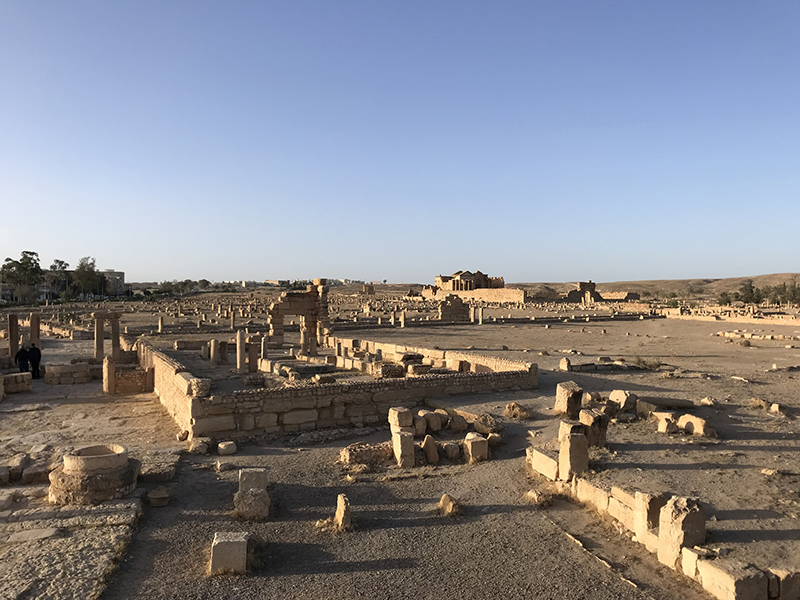La romanisation et l’introduction des nouvelles techniques en Afrique proconsulaire (Les moulins à grains et à huile)
Abstract
L’histoire de techniques en Afrique Proconsulaire est une « parente pauvre » [Amouretti (1987), 9], bien que de nombreuses études aient traité de l’économie africaine antique avec ses deux secteurs principaux : la céréaliculture et l’oléiculture. Au cours de ces études, devant la nécessité de respecter la démarche de travail et la chaine de production, il y a eu des études sur les matériaux de transformation, en mentionnant les types les plus célèbres. Malgré cela, et avec les quelques travaux récents, la situation est toujours ambiguë, d’où le recours à des approches typo-chronologiques pour comprendre l’introduction des quelques types en Afrique proconsulaire.
Riferimenti bibliografici
Amouretti M.-Cl. (1987), La diffusion du moulin à eau dans l’antiquité, un problème mal posé, in : De Répa-raz (A.) — L’eau et les hommes en Méditerranée, Actes du colloque du G.I.S 1984. Paris : CNRS, 13-23.
Aurelius Victor, Livre des Césars, texte établi, traduit et commenté par P. Dufraigne, 1975, Paris : Les Belles Lettres
Brun J.-P. (1986), L’oléiculture antique en Provence, les huileries du département du Var, Paris.
Brun J.-P. (2004), Archéologie du vin et de l’huile, de la préhistoire à l’époque hellénistique, Paris.
Cagnat R. (1916), L’Annone d’Afrique, Mémoires de l’Institut national de France, 40, 247-277.
Camps Fabrer H. (1953), l’olivier et l’huile dans l’Afrique Romaine, Alger.
Columelle, De Agricultura, III, texte établi, traduit et commenté par J.-Ch. Dumont, 2002, Paris : Les Belles Lettres.
Diodore de Sicile, Bibliothèque Historique, XI, texte établi, traduit et commenté par Daniel Gaillard Gou-kowsky et Paul Goukowsky, 2016, Paris : Les Belles Lettres.
Frankel R. (1993), The trapetum and the mola olearia, La production du vin et de l’huile en méditerranée, édité par M.-C. Amouretti et J.-P. Brun, Bulletin de correspondance hellénique, supplément XXVI, 477-481.
Ferron J. et Pinard M. (1955), « Les fouilles de Byrsa : 1953-1954 », Cahiers de Byrsa, V.
Gsell S. (1972), Histoire ancienne de l’Afrique du Nord, I - VIII, Osnabrück.
Hérodote, Histoires, Livre IV, texte établi, traduit et commenté par Ph.-E. Legrand, 1985, Paris : Les Belles Lettres.
Kolendo J. (1984), Le rôle économique des îles Kerkena au premier siècle avant notre ère, À propos du Bell. Afr., VIII et XXXIV, Bull. Archéol. CTHS, nouv. sér., 17B, 241-248.
Minaud G. (2012), « Romanisation économique du monde antique ». Disponible su : http://rfiea.fr/articles/romanisation-economique-du-monde-antique
Pavis-D’Escurac H. (1976), La préfecture de l’annone, service administratif impérial d’Auguste à à Constan-tin, Rome, Ecole française de Rome, 5-473.
Picard G. Ch. (1990), La civilisation de l’Afrique romaine, Paris.
Pline l’Ancien, Histoire Naturelle, Livre V, texte établi, traduit et commenté par Jehan Desanges, 1980, Par-is : Les Belles Lettres.
Pline l’Ancien, Histoire Naturelle, Livre XVII, texte établi, traduit et commenté par Henri Le Bonniec, 1972, Paris : Les Belles Lettres.
Salluste, La guerre de Jugurtha, texte établi et traduit par. A. Ernout, 2002, Paris : Les Belles Lettres.
Sanmarti J., Lopez A. et Alvares R. (2016), Les objets lithiques, Althiburos II, L’aire du Capitole et la nécropole méridionale : études, Tarragona, 275-286.
Slim H., Mahjoubi A., Belkhoja Kh. Et Nabli A. (2003), Histoire de la Tunisie : l’Antiquité, t. I, Tunis.
Souissi S (2020), Meules et Moulins en Afrique proconsulaire, 2 vol, Phd Thesis, Université de Manouba, Tunisie (sous presse).
Thébert Y. (1978), « Romanisation et déromanisation en Afrique : histoire décolonisée ou histoire inver-sée ? », Annales E.S.C., 33, n°1, 64-82
Tite Live, Histoire Romaine, tome XXXIX, texte établi par A.-M. Adam, 2003, Paris : Les Belles Lettres.
Copyright (c) 2023 Skander Souissi

Questo lavoro è fornito con la licenza Creative Commons Attribuzione - Non opere derivate 4.0 Internazionale.
Gli autori che pubblicano su questa rivista accettano le seguenti condizioni:
Gli autori mantengono i diritti sulla loro opera e cedono alla rivista il diritto di prima pubblicazione dell'opera, contemporaneamente licenziata sotto una Licenza Creative Commons - Attribuzione - Non opere derivate 4.0 Internazionale che permette ad altri di condividere l'opera indicando la paternità intellettuale e la prima pubblicazione su questa rivista.
Gli autori possono aderire ad altri accordi di licenza non esclusiva per la distribuzione della versione dell'opera pubblicata (es. depositarla in un archivio istituzionale o pubblicarla in una monografia), a patto di indicare che la prima pubblicazione è avvenuta su questa rivista.
Gli autori possono diffondere la loro opera online (es. in repository istituzionali o nel loro sito web) prima e durante il processo di submission, poiché può portare a scambi produttivi e aumentare le citazioni dell'opera pubblicata (Vedi The Effect of Open Access).








